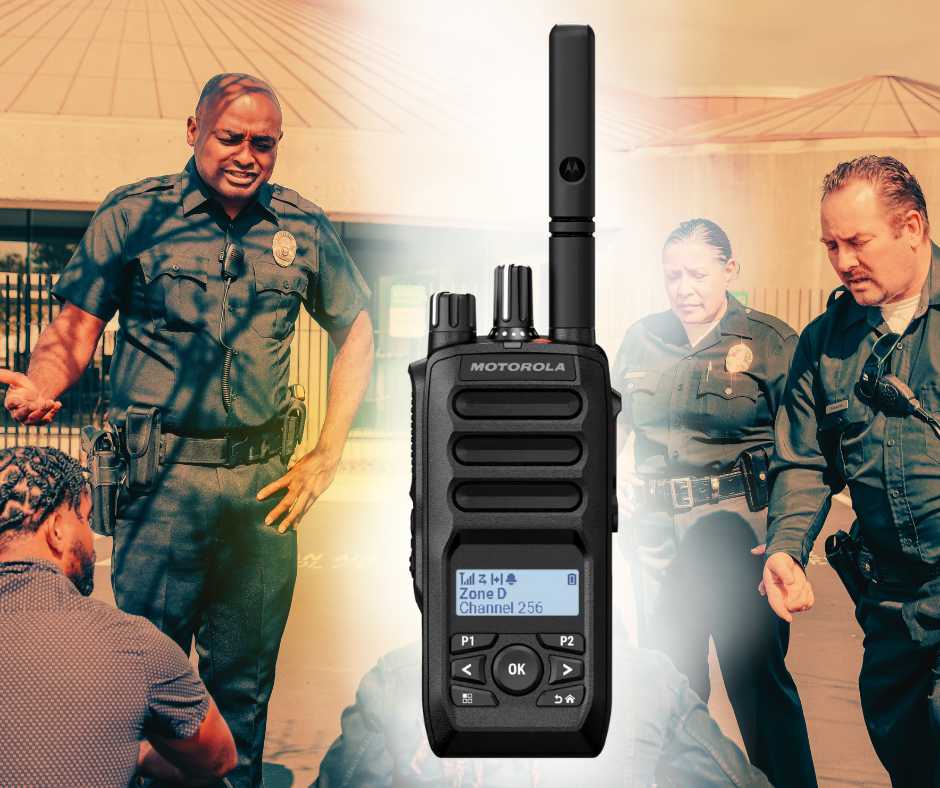You’ve probably heard of a public service officer or a police officer, but what about a public information officer? While they may not wear a badge or respond to 911 calls, public information officers (PIOs) play a super important role in keeping communities informed, especially when clear communication matters most.
A public information officer is a communication professional who serves as the official liaison between an organization and the public. Whether it’s updating residents during a severe weather event, answering media questions after an incident, or helping explain a new public health policy, the PIO’s job is to make complex or technical information understandable and accessible to everyone.
Most public information officers work for state or local governments, but you’ll also find them embedded in law enforcement agencies, school districts, hospitals, utility companies, and emergency response teams. Their role is especially important where accurate information needs to be shared quickly and publicly.
In this article, we’ll share what you want to know about what public information officers do, where they work, and how they manage communication in both everyday situations and emergency events. We’ll even take a closer look at the tools they rely on, particularly two-way radios, and how technology helps them coordinate and deliver timely messages that keep communities safe and informed.
Why Public Information Officers Are So Important
Public agencies are under more pressure than ever to communicate clearly and quickly. Whether it’s a local government announcing new road closures or a school district addressing a safety concern, people expect to hear timely, accurate information directly from a trusted source. This is exactly where public information officers step in.
According to the U.S. Bureau of Labor Statistics, employment of public relations specialists, including public information officers, is projected to grow by 6% from 2023 to 2033, which is faster than the average for all occupations. That growth reflects the rising demand for professionals who can manage messaging in both routine situations and emergencies.
Without a clear, coordinated voice, misinformation can spread rapidly, especially on social media. A lack of communication can lead to confusion, panic, or mistrust in public institutions. PIOs help combat this by serving as the official spokesperson for their organization, delivering factual, consistent, and easy-to-understand updates.
During high-stakes events, such as wildfires, hurricanes, police activity, or school lockdowns, PIOs play an essential role in delivering real-time updates and instructions. But they’re just as important during routine communications, like announcing public meetings or sharing updates on community programs. Their work helps agencies maintain transparency, build trust with the public, and respond effectively when every second counts.
Where Public Information Officers Work
We touched on this earlier, but the truth is that public information officers work in a variety of different industries. Any organization that serves the public, especially during critical or high-pressure situations, can benefit from having a trained PIO on staff. Here are some of the most common settings where public information officers work, along with the types of messages they help deliver:
- State and Local Governments: Share updates on new policies, city projects, road closures, emergency declarations, and public hearings.
- Law Enforcement Agencies: Communicate details about ongoing investigations, arrests, public safety alerts, or community policing initiatives.
- Fire Departments and EMS: Provide fire safety education, incident updates, evacuation orders, and recovery information after a major event.
- Public Health Departments: Deliver timely messages about health advisories, vaccine distribution, outbreak containment, and community health programs.
- School Districts: Issue notifications about closures, safety protocols, school events, or incidents affecting student and staff safety.
- Utilities and Infrastructure Agencies: Announce planned outages, boil-water notices, maintenance schedules, and emergency repair updates
Key Responsibilities of a Public Information Officer
Clearly, the dissemination of critical information is the primary responsibility of a PIO, whether they work in law enforcement, education, for the local government, or whatever industry they serve. But effective communication goes beyond issuing a statement or posting an update. Public information officers must be skilled at tailoring messages to different audiences, staying composed under pressure, and responding in real time to rapidly changing situations.
PIOs operate at the intersection of communication and public service. They must understand not only what needs to be said, but also when and how to say it. Whether they’re preparing a public health announcement, responding to media during a wildfire, or answering community questions about school safety protocols, PIOs serve as the trusted voice of their agency.
Here are some of the key responsibilities a public information officer may take on:
- Develop Press Releases: Craft clear, accurate written messages for media distribution, public advisories, and website content.
- Hold Press Conferences: Act as the face of the agency, answering reporters’ questions and delivering live statements during events or emergencies.
- Manage Social Media Accounts: Share real-time updates, respond to questions, and counter misinformation through official social platforms.
- Coordinate with News Media: Serve as the primary point of contact for journalists, organize interviews, and issue credentials for press events.
- Support Emergency Operations: Communicate evacuation instructions, safety protocols, and recovery information during crises.
- Monitor Public Sentiment: Track community feedback, social media comments, and news coverage to adjust messaging and address concerns.
- Create Educational Campaigns: Simplify complex issues, like public health regulations or utility changes, into messages the public can understand and trust.
- Develop Crisis Communication Plans: Prepare proactive messaging, media strategies, and talking points before incidents occur.
- Communicate Internally: Keep leadership and staff aligned with public messaging, and provide updates during emergencies or major announcements.

How Public Information Officers Communicate in the Field
This all begs the question: in the midst of an emergency situation, how do PIOs disseminate information quickly and accurately? Certainly, taking the time to get to a laptop and send an email is not realistic. And cell phones don’t always connect, especially during natural disasters, when networks are overloaded or damaged.
Field-based communication is a core part of the public information officer’s role. When an incident occurs, a chemical spill, a school lockdown, or a wildfire evacuation, PIOs are often embedded directly with first responders. They work closely with police officers, firefighters, paramedics, and command staff to gather accurate information and share it with the public as events unfold.
In these high-pressure scenarios, the need for real-time coordination becomes critical. Messages must be consistent across departments. What the fire department is telling the public should match what police are saying and align with guidance from local government or public health officials. Any gaps or delays in communication can lead to confusion or, worse, public panic.
That’s why field-based communication tools need to be fast, reliable, and flexible. PIOs must be able to listen in on operations, get instant updates from command, and distribute approved messaging without delay. Whether it’s coordinating a media briefing on scene or relaying evacuation instructions to residents, PIOs rely on tools that help them stay connected, wherever the job takes them.
How Two-Way Radios Support Public Information Officers
For public information officers, two-way radios are a lifeline. In the field, radios provide a direct, dependable line of communication that supports fast decision-making and real-time coordination.
Unlike phones or email, two-way radios offer instant communication, allowing PIOs to relay updates or receive new instructions with the push of a button. They also offer direct access to command staff, which is especially important as situations evolve and messaging needs to be adjusted on the fly.
PIOs often work alongside multiple departments, police, fire, EMS, which makes interoperability a key advantage. Two-way radios let them stay connected across agencies without switching platforms. Radios also work reliably when cell towers go down, making them a trusted tool during natural disasters, large-scale emergencies, and school lockdowns.
In more controlled situations, like press briefings at a crime scene or school safety drills, radios enable discreet communication through earpieces, so PIOs can stay alert without interrupting the flow of information to the public.
EMCI Wireless offers radio solutions tailored for public agencies in communities across southern and central Florida, such as Boca Raton, Lauderhill, Naples, and everywhere in between. This helps make sure that PIOs have the clarity, range, and reliability they need, no matter where the job takes them or how urgent the situation becomes.
The Future of Public Information and Emergency Communications
As communication technology continues to evolve, public information officers now rely on a growing mix of tools to do their jobs: social media platforms, mass notification systems, mobile apps, and more. These channels allow agencies to reach people quickly and widely. But while these digital tools are valuable, they don’t replace the need for clear, real-time coordination on the ground.
Public expectations have shifted. Communities now look for immediate updates during emergencies, accurate details during unfolding events, and consistent messaging across every platform. Meeting those expectations requires flawless communication behind the scenes.
That’s why tools like two-way radios remain essential. They offer instant, dependable access to team members, leadership, and partnering agencies. In high-pressure situations where seconds matter, radios help public information officers stay informed, connected, and ready to communicate confidently.
If your agency plays a role in public safety, crisis response, or daily community updates, having the right communication system is non-negotiable. EMCI Wireless offers professional-grade two-way radio solutions designed specifically for public agencies. From daily fieldwork to critical incident response, we can help you build a system that works when it matters most. Reach out to our team today to get started.

